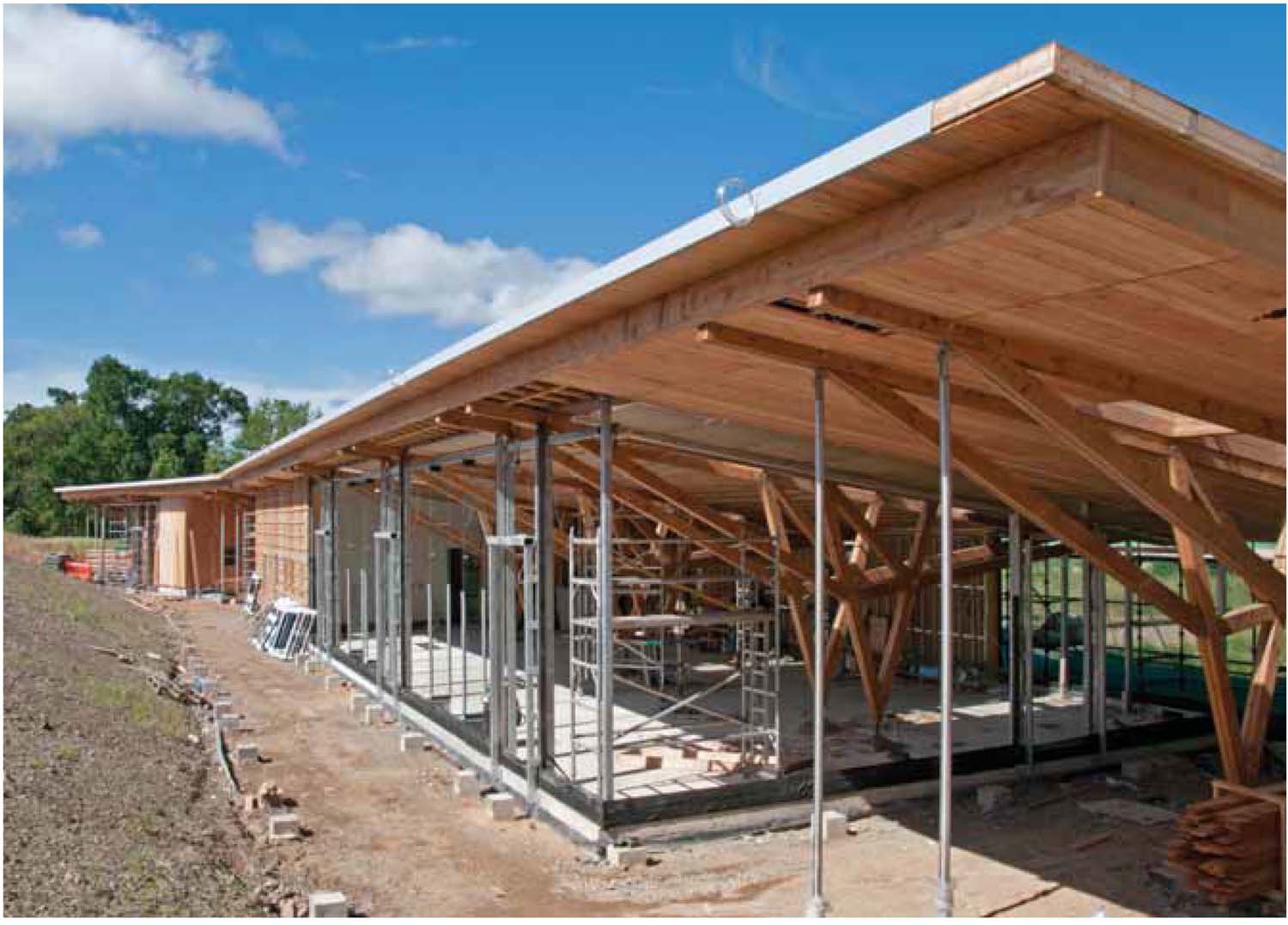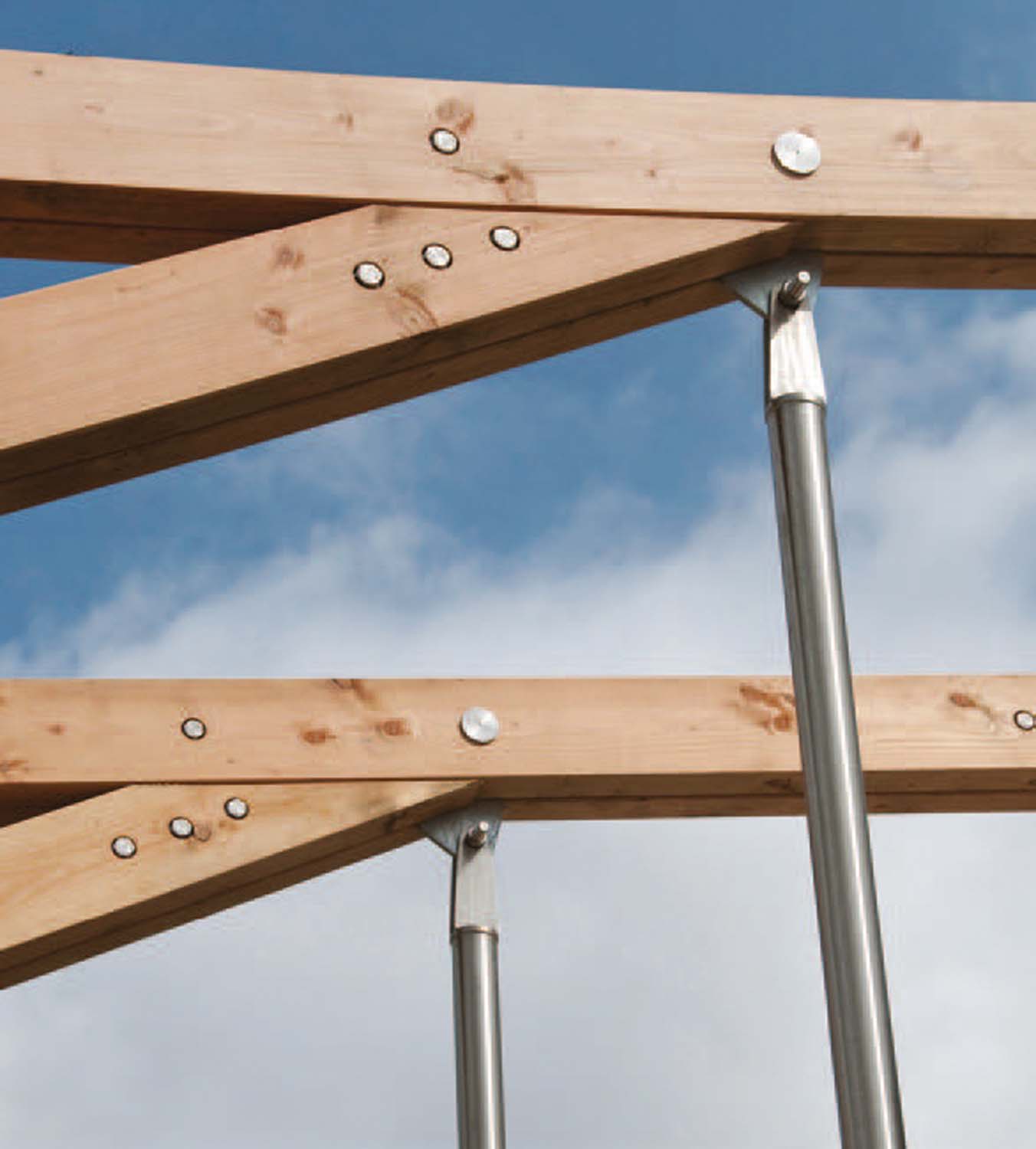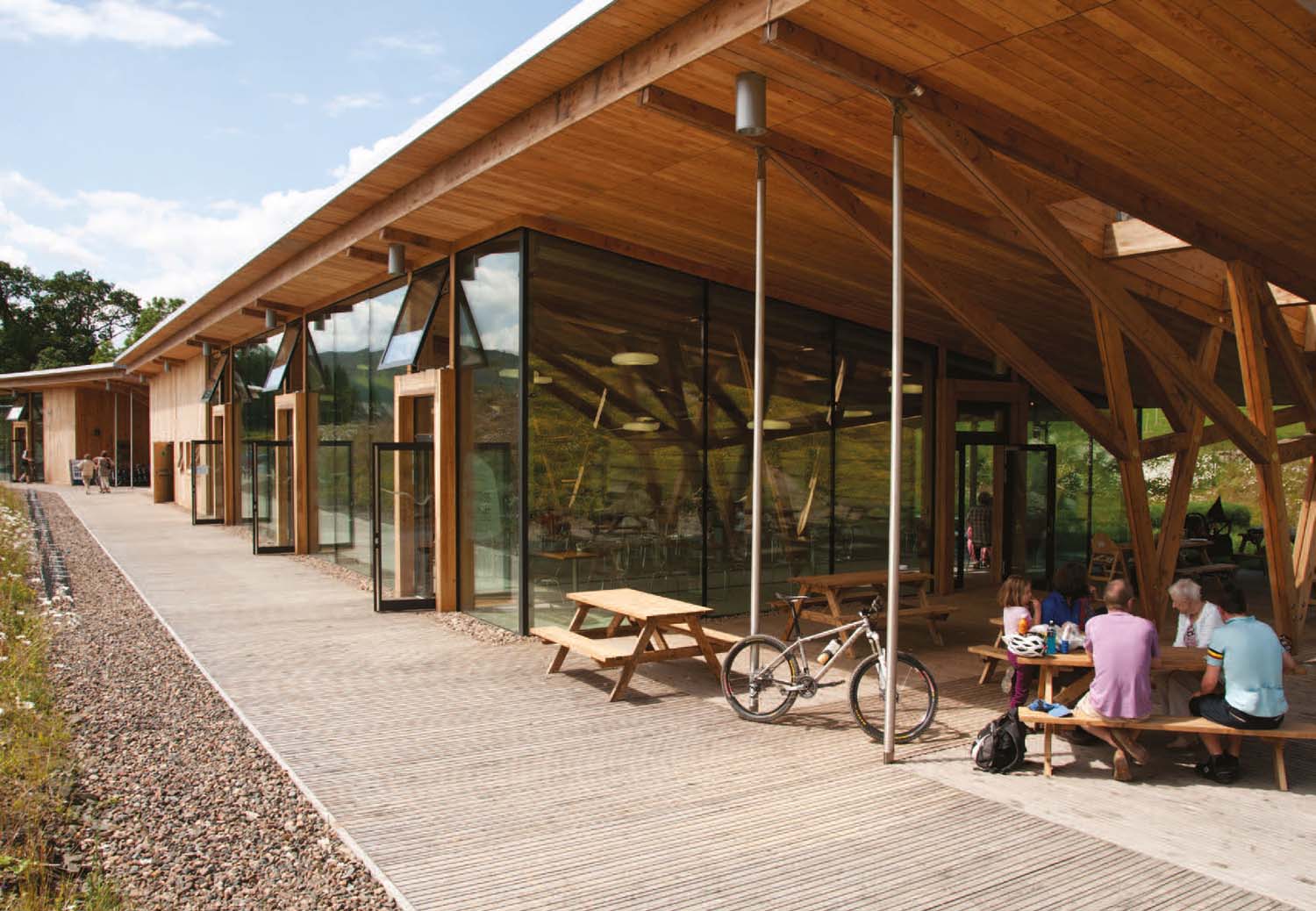Glentress Forest has developed its recreation opportunities significantly in recent years and is now a vibrant and popular leisure resource receiving about 250,000 visitors every year.
As well as the traditional forest walks, the forest has:
- a network of mountain bike trails
- a forest drive
- several community-based recreational projects
The new visitors’ building, Glentress Peel, will contain a café, bike shop and hire centre, osprey viewing area, education and exhibition space, showers, WCs, and ranger facilities. It provides a permanent, purpose-built and sustainable facility for use by the growing number of visitors and staff at Glentress.
Timber technologies
Douglas fir was used for the trusses, external cladding and battens, ceiling lining boards, and decking.
The linings and skirtings are Scottish larch and Douglas fir. The window frames are Scottish oak, and the internal doors are Scottish birch.

In the works
Special timber-related features
A bespoke truss structure supports the roof of the buildings, fabricated with timber from Glentress Forest itself. Timber I-beams form the structural element of the external walls.
Preservative-free timber has been used for the cladding, decking and ceiling lining boards. Exposed timber is detailed for maximum durability, primarily with heartwood timber, eliminating the need to treat it with preservatives.
The building comes close to requiring zero active heating and cooling systems because of:
- south-facing glazing
- solar shading
- high levels of airtightness
- cellulose (recycled newspaper) insulation
- thermal mass elements
The breathing wall and roof construction, along with the use of hygroscopic surface finishes and natural ventilation, regulate moisture levels. Together with solvent-free paints and formaldehyde-free timber products, this ensures that a healthy indoor environment is achieved.

A library of sustainable building materials
Our website includes a web-based resource that showcases sustainable, traditional, innovative, recycled and low carbon building materials. If you are looking for inspiration or information on different types of materials to consider for your project, visit our materials library.

